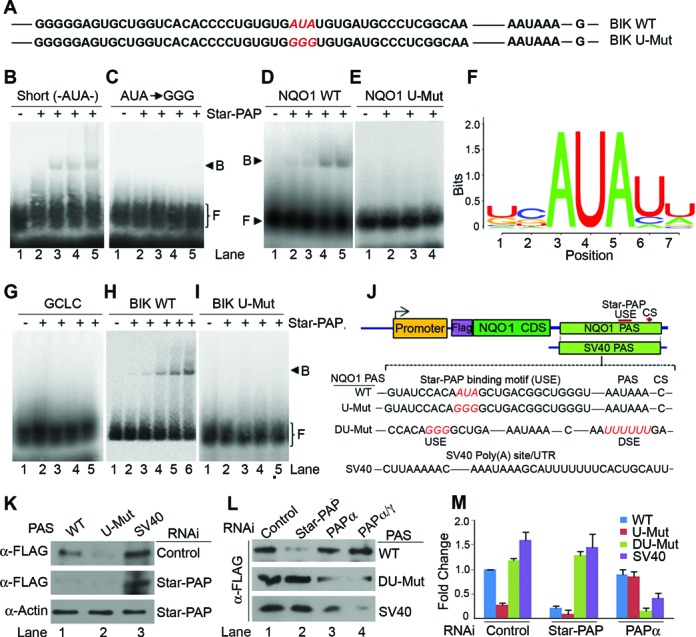Figure 3.

Star-PAP recognition of target mRNA is driven by a -AUA- core motif upstream of PAS. (A) BIK UTR RNA sequence showing Star-PAP binding region and mutations of AUA motif. (B) RNA EMSA experiment of Star-PAP with short RNA oligo having AUA in the sequence (C) with AUA to GGG mutation on the oligo (D) with NQO1 UTR RNA (E) with a mutation of AUA to GGG on NQO1 UTR. (F) Putative Star-PAP binding motif obtained by in silico analysis of Star-PAP target mRNAs at the Star-PAP binding region with core -AUA- motif. (G) RNA EMSA experiment of Star-PAP with GCLC UTR RNA (H) BIK UTR and (I) BIK UTR with AUA to GGG mutation in the Star-PAP binding region. F: free probe, B: Star-PAP-RNA binary complex. (J) Schematic of reporter mini gene construct of FLAG-NQO1 expressed from pCMV promoter and driven by NQO1 PAS (Star-PAP regulated distal poly(A) site that controls overall NQO1 expression, see Supplementary Figure S3) or control SV40 UTR. The sequence of the Star-PAP binding USE and the mutation of the AUA (U Mut) or introduction of U-rich DSE (D-Mut), or both (DU-Mut) is indicated. (K and L) Western blot analysis of FLAG-NQO1 HEK 293 cell lysates after transfection of the reporter constructs under the conditions as indicated. (M) qRT-PCR analysis of FLAG-NQO1 expression with a forward primer from FLAG and reverse primer from NQO1 CDS from HEK 293 cells after transfection of the reporter constructs.
